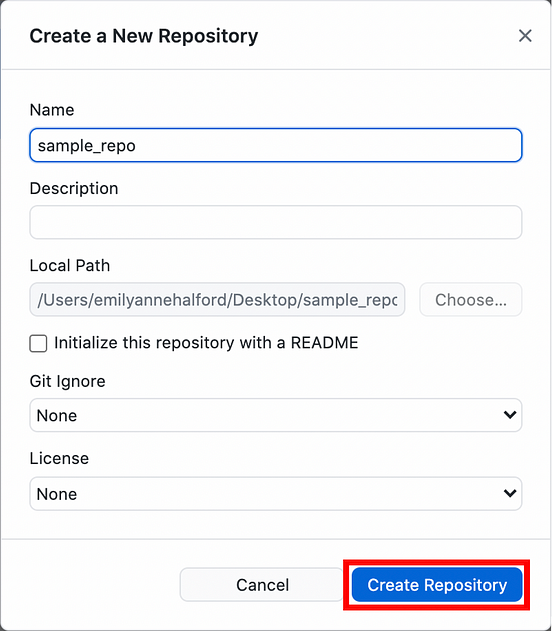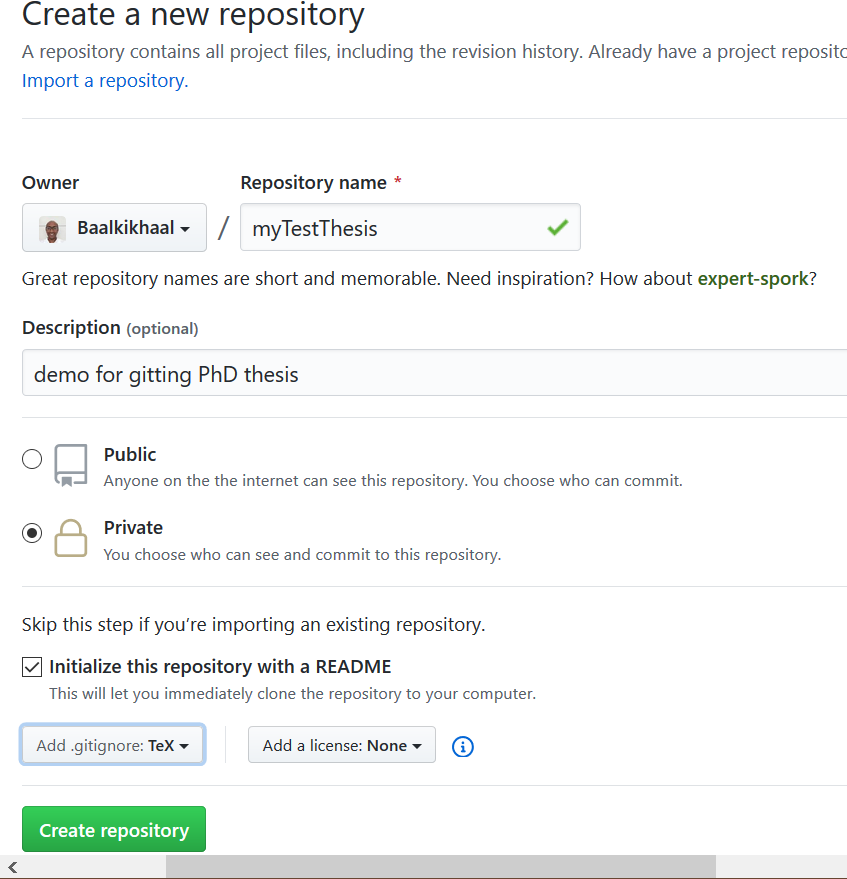

- Github desktop create repository from existing folder how to#
- Github desktop create repository from existing folder install#
- Github desktop create repository from existing folder windows#

With a bit of magic, though, we can see it ourselves. That period in front of the `.git` folder means that it’s actually a hidden folder, so it won’t show up in your Finder or Explorer window and is typically only meant for scripts and OS-level commands to access. In that case you just create a new local repository in GitHub Desktop and then push it up to GitHub. If `ls` and seeing your project’s folders isn’t enough for you, there’s another technique to be even more sure that you’re in the right place. This operation is simple if your repository on GitHub is to have the same name as the local folder on the PC. Push File to the Repository using Visual Studio. Let’s add a sample file to the repository. You will be prompted with a black solution since we don’t have any files yet. The other way is to initialize a new Git repository using the `git init` command to set up version tracking in a new folder.Įither way, that `.git` folder I mentioned should exist in the repository’s root (top-most folder). Open Visual studio and then select Clone Repository. One way is to run the `git clone` command and clone a repository from an existing repository (whether that repository exists locally on your computer or on a server running Git such as ). The git commit -m 'first commit' saves changes to the local repository with a commit message. command add changes of files for the next commit. Generally speaking, you can get a Git repository locally in one of two ways. The echo ' test' > README.md command adds README.md file The git init command initializes an unversioned project repository as a new git repository.
$ git remote add originTo remove this commit and modify the file, use 'git reset -soft HEAD~1' and commit and add the file again.ħ- # At the top of your GitHub repository's Quick Setup page, click to copy the remote repository URL.Ĩ- # In Terminal, add the URL for the remote repository where your local repository will be pushed. Open Git bash and type in the following command to browse to the folder created. We will assume that the address to this folder is 'C:ProjectsGit' where you will create your Git projects. To do so, click the second box down, where it says, Create a New Repository on your.
Github desktop create repository from existing folder windows#
# Commits the tracked changes and prepares them to be pushed to a remote repository. Create a new folder in your Windows file explorer. The most important action we can take here is to create a new repository. NET consistently ranks among the top 30 most active open source projects.
Github desktop create repository from existing folder how to#
Click Create New Repository, fill out the name and choose your projects folder as Local Path. 12 ) How to Push an Existing Project or New Project to Existing GitHub Repository. This should work on either Ubuntu Desktop or. After you create a new public repository on GitHub. You'll notice a message stating that an empty Git repository is created. Or in other words, an empty Git Repository is initialized. Consequently, the execution of this command creates a hidden. This just gets basic Moodle working on localhost. Step 3: Initialize Bare Git Repository for the Project - Enter the command git init this command is used to Create Git Repository. 3) Now we need to create a new folder for your new repository and set some.
Github desktop create repository from existing folder install#
apt-get update apt-get install apache2 git-core. To unstage a file, use 'git reset HEAD YOUR-FILE'.Ħ- # Commit the files that you've staged in your local repository. Initial commit Open GitHub Desktop and your projects folder. Run the following commands in Terminal to install Git 2.9.3 on Ubuntu, via PPA: sudo add-apt-repository ppa:git. # Adds the files in the local repository and stages them for commit. Here are all the steps to do it: On Eclipse. You can add these files after your project has been pushed to GitHub.ģ- # Change the current working directory to your local project.Ĥ- # Initialize the local directory as a Git repository.ĥ- # Add the files in your new local repository. Other team members can clone the Repository that you created in the previous step to create their Local Repository. Now, open the repo using this button - Show in Explorer. You can add existing local repo by clicking on Add an existing Repository from hard drive. Open the repo online & do the following - Click on Open with GitHub Desktop.


Suppose You created a repo in GitHub already. To avoid errors, do not initialize the new repository with README, license, or gitignore files. Using Existing Repository instead of creating New.
Git remote add origin

 0 kommentar(er)
0 kommentar(er)
